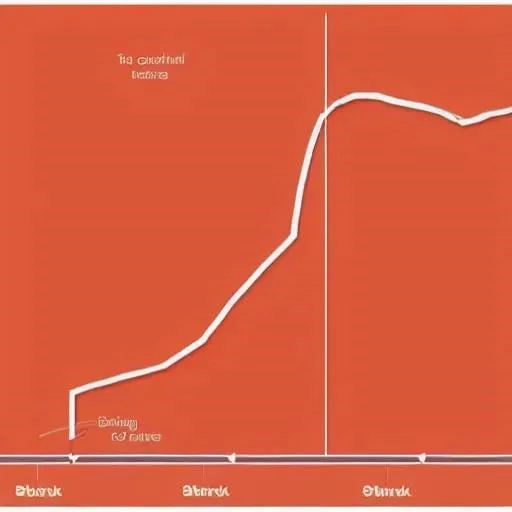The global foreign exchange market, a colossal arena where trillions change hands daily, remains an unrivaled frontier for astute investors and ambitious traders alike. As we navigate the dynamic financial landscape of 2025, a profound understanding of the main forex pairs isn’t just an advantage—it’s an absolute necessity. These heavily traded currency combinations represent the very pulse of the world economy, offering unparalleled liquidity and a gateway to potentially transformative returns. Far from being mere abstract numbers, these pairs are vibrant indicators, reflecting the intricate dance of central bank policies, geopolitical shifts, and technological advancements that shape our financial destiny.
For both seasoned veterans and burgeoning traders, identifying the most potent opportunities within this vast market is paramount. The allure of major currency pairs lies in their inherent stability and predictability, qualities directly stemming from their immense trading volume. Unlike niche assets that can experience wild, unpredictable swings, the sheer activity surrounding these foundational pairs fosters a remarkably tighter price range. This inversely proportional relationship between volume and volatility ensures smaller spreads, making them incredibly attractive entry points for strategic trading. By integrating insights from cutting-edge market analysis and disciplined risk management, traders are uniquely positioned to capitalize on these enduring pillars of the forex world.
| Currency Pair | Description & Significance | Key Trading Advantages | Influencing Factors | Reference |
|---|---|---|---|---|
| EUR/USD | The Euro vs. US Dollar. The most traded currency pair globally, often reflecting the economic health of the Eurozone and the United States. | Highest liquidity, narrowest spreads, extensive market data, ideal for technical and fundamental analysis. | Interest rate differentials (ECB, Fed), inflation, GDP reports, political stability in Europe and the US. | Investopedia |
| USD/JPY | US Dollar vs. Japanese Yen. Represents the world’s largest economy against one of Asia’s most influential, often acting as a safe-haven pair. | High liquidity, active during Asian and US sessions, responsive to risk sentiment shifts. | Bank of Japan policy, US Treasury yields, global risk sentiment, trade balances. | Investopedia |
| GBP/USD | British Pound vs. US Dollar, historically known as “Cable.” Reflects the economic interplay between the UK and the US. | Significant volatility providing ample trading opportunities, strong trend potential during London and New York sessions. | Bank of England policy, UK economic data (CPI, GDP), Brexit implications, US economic strength. | Investopedia |
| USD/CHF | US Dollar vs. Swiss Franc. The Swiss Franc is traditionally a safe-haven currency, reflecting global stability concerns. | Benefits from safe-haven flows, relatively stable, often moves inversely to EUR/USD. | Swiss National Bank policy, global geopolitical events, economic data from Switzerland and the US. | Investopedia |
| USD/CAD | US Dollar vs. Canadian Dollar, often called the “Loonie.” Heavily influenced by commodity prices, particularly crude oil. | Strong correlation with oil prices, active during North American trading hours, clear directional trends. | Bank of Canada policy, crude oil prices, US and Canadian economic reports. | Investopedia |
| AUD/USD | Australian Dollar vs. US Dollar, known as the “Aussie.” Influenced by commodity prices and Asian economic health. | Responsive to global commodity cycles and Australian economic data, offers clear trends. | Reserve Bank of Australia policy, iron ore and other commodity prices, Chinese economic data, US economic strength. | Investopedia |
| NZD/USD | New Zealand Dollar vs. US Dollar, often called the “Kiwi.” Also a commodity-linked currency, sensitive to dairy prices. | Similar to AUD/USD but with unique drivers, offers distinct trading patterns. | Reserve Bank of New Zealand policy, dairy prices, tourism, US economic data. | Investopedia |
The concept of liquidity and its fascinating inverse relationship with volatility is often misunderstood by nascent traders. Picture the difference between buying a highly popular smartphone on eBay versus a rare, vintage computer. The iPhone’s price, due to immense transaction volume, will remain in an incredibly tight, predictable range, reflecting consistent demand and supply. Conversely, the niche computer’s price might vary wildly simply because there are fewer transactions, allowing individual bids or asks to skew the market. This powerful analogy perfectly illustrates why the EUR/USD, trading at over 24% of daily forex volume, exhibits such remarkably tight spreads and stable price action compared to less active pairs. Its incredible liquidity fundamentally reduces wild swings, making it a cornerstone for strategic trading.
Looking ahead to the remainder of 2025, the profit potential within these main forex pairs is undeniably robust, underpinned by several key drivers. Central bank divergence, with differing monetary policies across major economies, will continue to sculpt compelling directional profit opportunities. Moreover, evolving global trade policies and the inherent volatility of critical commodities will undoubtedly create significant market movements, presenting fertile ground for informed traders. By strategically navigating these macroeconomic currents, blending an acute awareness of global trends with technical precision, and employing disciplined risk management, traders can unlock remarkable value.
Expert analysts consistently emphasize the utility of focusing on a select few major pairs, rather than spreading oneself too thin across the vast market. “Most profitable traders,” notes one industry veteran, “trade just 2-3 pairs. Narrow down to those where you have the most edge and understanding.” This advice rings true, allowing for deeper market observation and pattern recognition. For instance, the London session consistently offers dynamic moves in pairs like GBP/JPY and GBP/USD, while Yen pairs, when correctly paired, often present highly predictable trends, offering clear entry and exit points for discerning traders.
Beyond the technical charts, the burgeoning field of sentiment analysis has emerged as an incredibly effective tool for understanding collective market psychology and forecasting currency pair movements. Integrating these insights, alongside robust risk management principles—because even the most promising trade can falter without protection—becomes absolutely critical. The forward-looking trader in 2025 isn’t just reacting to news; they are proactively anticipating market shifts, leveraging comprehensive data, and maintaining unwavering discipline.






